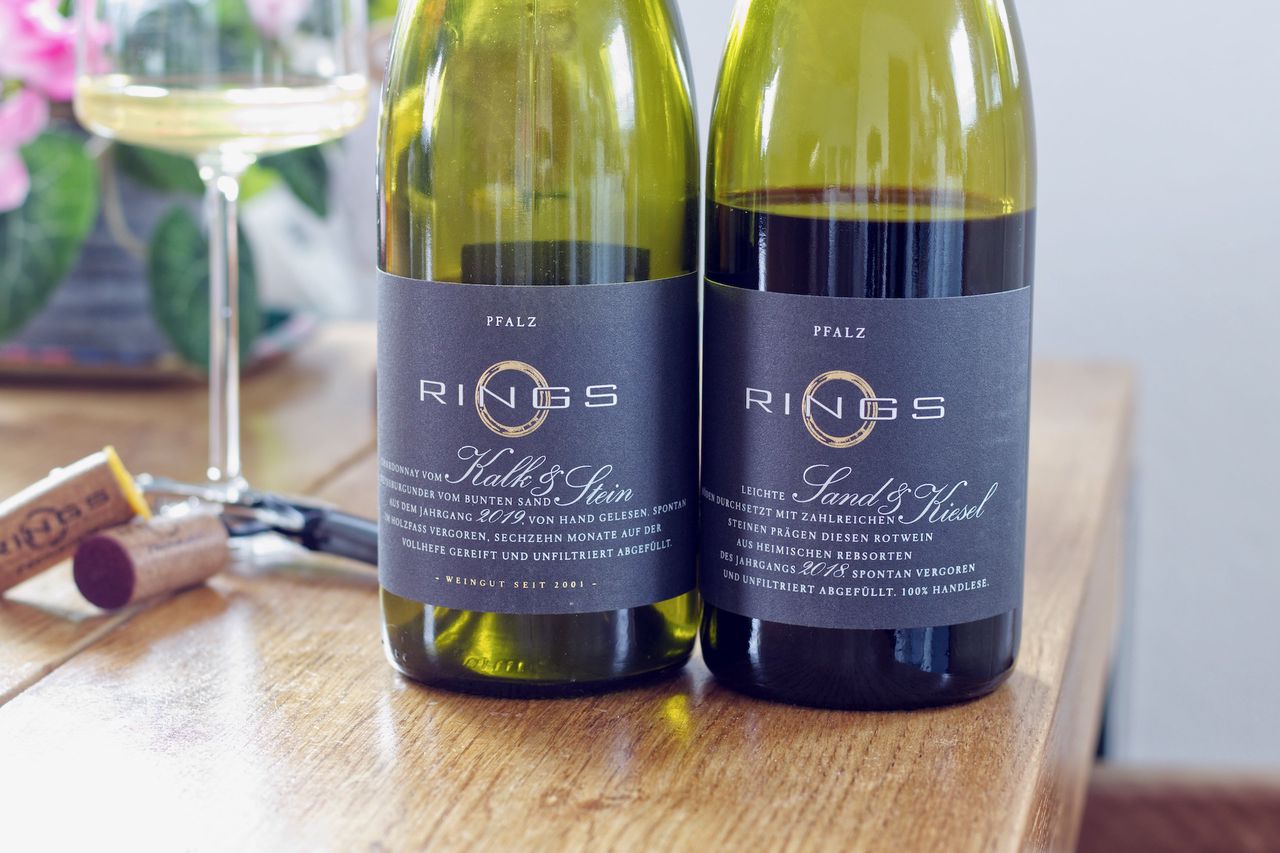Kalk and Stein and Sand and Kiesel
We drink a bottle of Kalk and Stein 2019 and a bottle of Sand and Kiesel 2018 from the Rings Winery in the Palatinate.

I admit that the possibility of having the title Kalk and Stein and Sand and Kiesel has contributed not insignificantly to the selection of the two wines today. It was just too tempting to taste the two wines from the Rings winery together. The Rings Winery has been in existence since the 2001 vintage. Prior to that, the grapes were processed into bulk wine in a mixed agricultural operation and not marketed by the winery itself. Since 2008, the winery has been run jointly by brothers Andreas and Steffen Rings, and since 2015, the VDP eagle has also appeared on the neck of the bottle. The 35 hectares of vineyards in the Palatinate are farmed organically. The Kalk and Stein is a blend of about 70% Chardonnay from limestone soil and about 30% Weissburgunder from red sandstone. The wine is aged, as it says on the label if you speak german, after spontaneous fermentation on the full lees in wooden barrels for 16 months and then bottled unfiltered and unfined. The Sand and Kiesel is a single-varietal Portugieser from sand and pebble soil. It is also fermented spontaneously and aged for 1.5 years in used wood.
We start with the Kalk and Stein. It smells slightly reductive and has decent minerality to it. There is something woody and hardly any fruit. What fruit is present is reminiscent of pome fruit. It all seems pretty straight on the nose and stays that way while drinking. The acidity has a good bite but is not unpleasantly intrusive. What really pleases is the salty minerality that the wine leaves on the lips. From the first sip, it’s fun. We would have had another bottle of 2020 to choose from, but I think that some bottle maturity does the wine really good. You can’t really feel any of it now though. A year is with such wines not time at all. We had the wine some time ago in a restaurant and it still tastes exactly as I can remember. It feels super cool and the smoky, reductive nose just caught me. With more air, the pome fruit on the nose becomes more citrus with grapefruit and lemon. It also gains a lot more structure. Whenever the wine appears somewhere, one reads only good things. I can fully understand that.
With a day of air, the reduction goes back a bit. In return, the wine now seems more herbal both on the nose and on the palate. And one has the feeling that the acidity is gripping a bit more. I always find that exciting, too. Of course, no one came along overnight and dumped acid into the wine. At least that’s what I hope. Who knows who lives in our refrigerator. Nevertheless, the taste impressions shift with oxygen sometimes really extreme. Here, that change is more of an evolution and not as pronounced. Some popcorn has been added to the scent. That was not there yesterday. This one is guaranteed to be a real joy for a few more years.
The Sand and Kiesel smells slightly dirty and a bit scrubby. Minimally there are green notes along with dark fruit, blueberries, wood, marzipan, leather and spice. In the mouth, the wine is then much softer than I would have guessed after the intense nose. The tannin is nice and fine and the fruit is super fresh and there is decent acidity in the wine here as well. With air, the dirt turns to a more ethereal, medicinal note. The blueberry remains though and in the mouth the fruit becomes more intense. This is pretty good already. And that’s despite the fact that it doesn’t exactly have it easy to blossom next to the great Kalk and Stein.
The fruit becomes even more intense and dense overnight. The tannin remains soft but gives enough structure and the spice and acidity then round it out. I’d put this in the “Saufwein with food” drawer at this point. And I would like to express that as an award and not as criticism.